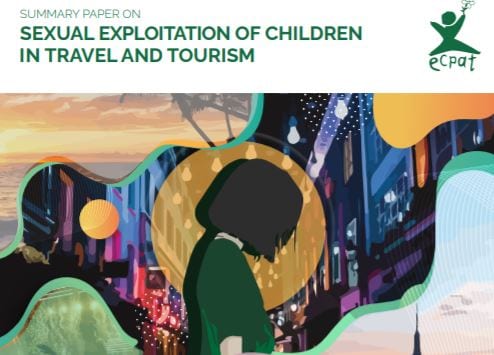
Summary Paper on Sexual Exploitation of Children in Travel and Tourism
Over the last decades, the world population has become increasingly mobile, with travel and tourism becoming a part of more people’s lives than ever. Until the global COVID-19 pandemic the number of international travellers had continued to grow, and was expected to reach 1.8 billion by 2030.1
Similarly, domestic travel has become more frequent and increasingly accessible to many. Unfortunately, at the same time, the sexual exploitation of children in the context of travel and tourism (SECTT) has continued to thrive globally, with child sex offenders using the infrastructure of the industry, increasingly combined with online technologies, to commit their crimes.
There is no doubt that the international response to the COVID-19 pandemic in early 2020 had a massive impact on the travel and tourism industry. Postpandemic tourism restarted with domestic travel, and will increasingly use technology along with new travel and tourism products. It is crucial to capitalise on the progress to fight sexual exploitation of children that has been made in recent years by
adequately addressing SECTT during the recovery of the travel and tourism industry.
Tackling SECTT has always been at the heart of ECPAT International’s mandate. It has been thirty
years since the first steps against sexual exploitation of children (SEC) were taken – notably as part of the first campaign to protect Asian children from travelling child sex offenders that officially launched
the work of ECPAT International. This Summary Paper outlines key trends and priority areas of
work that ECPAT International considers to be integral in fighting SECTT and addressing children’s
vulnerability today.
Click here to read full report.
